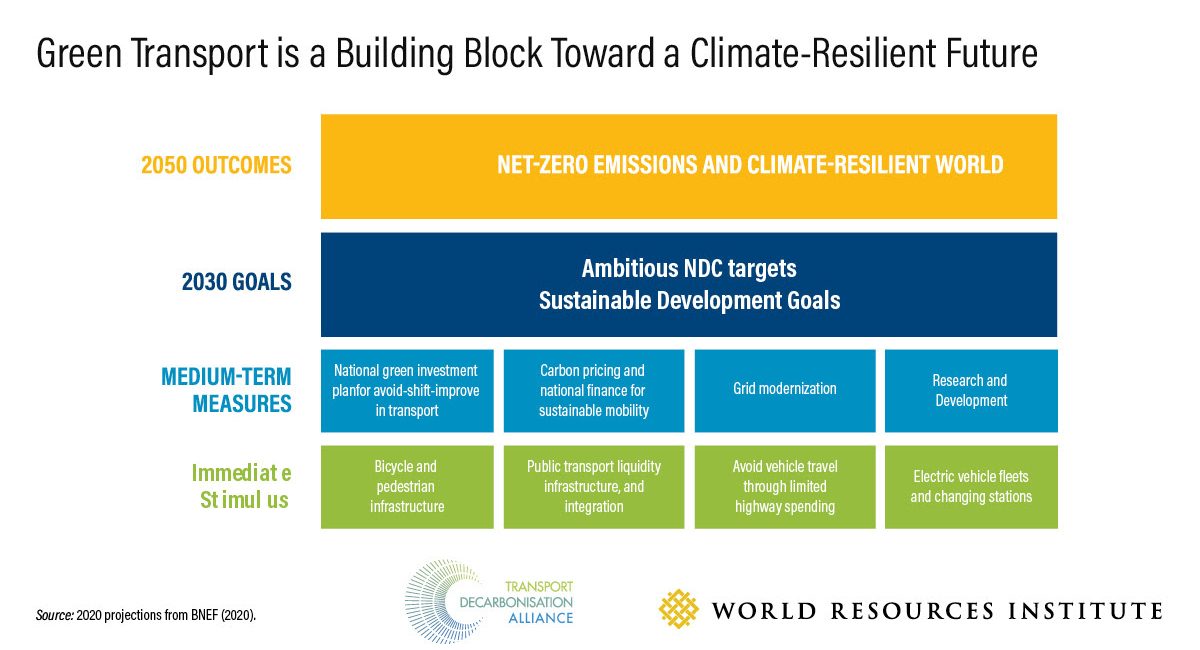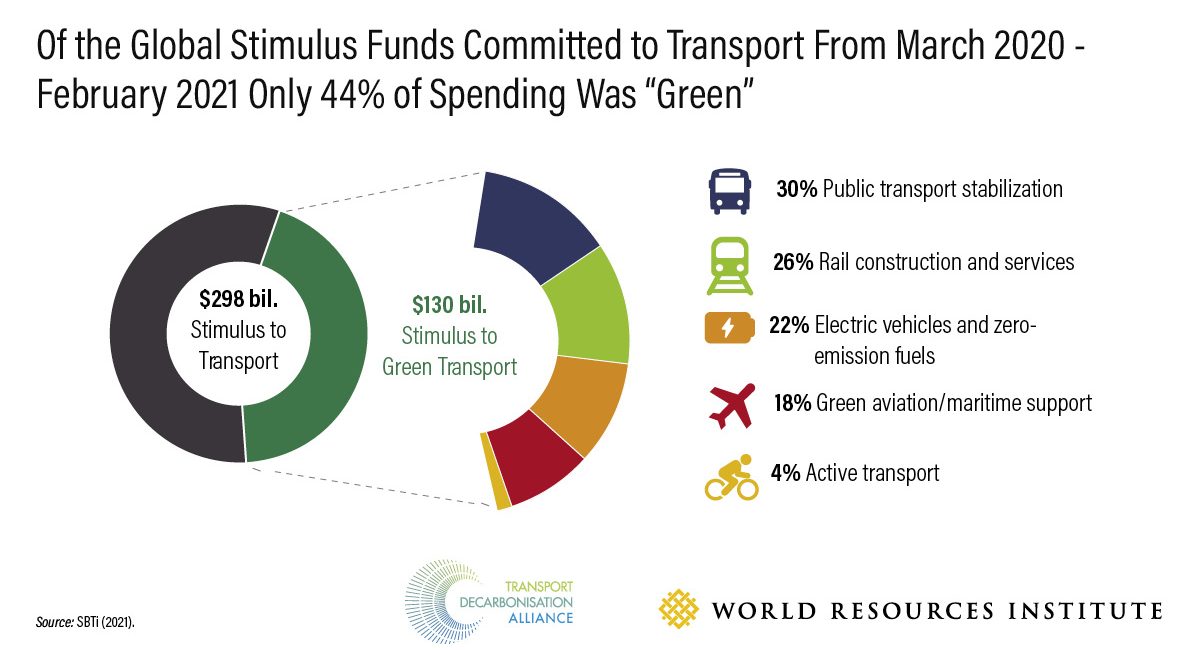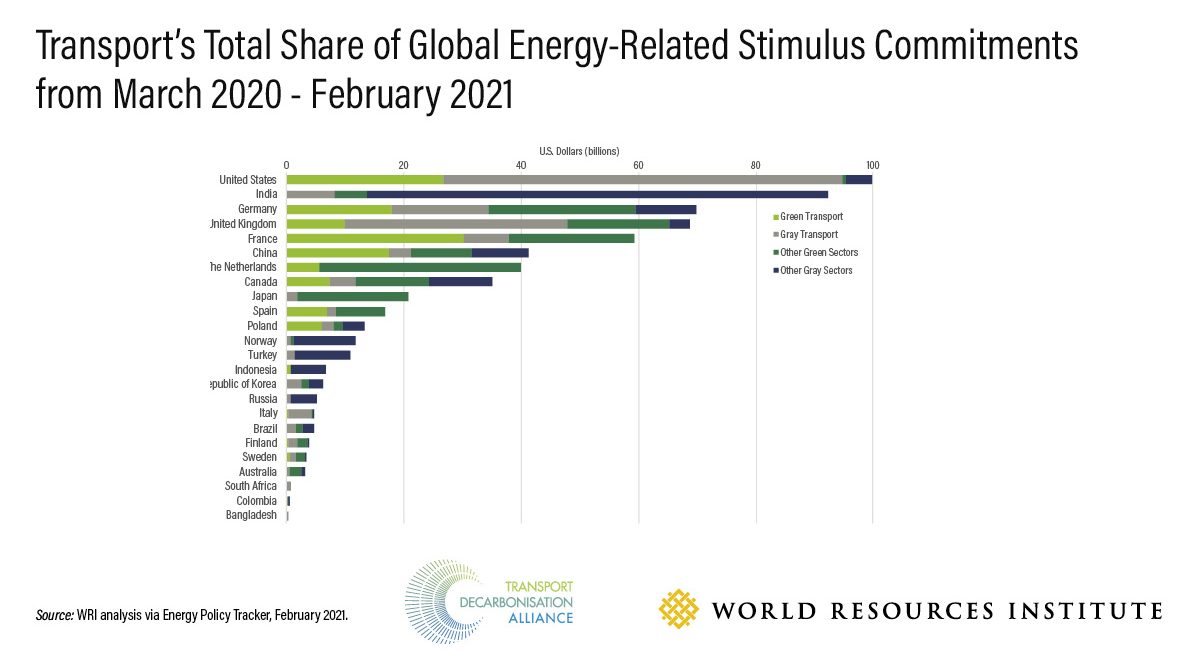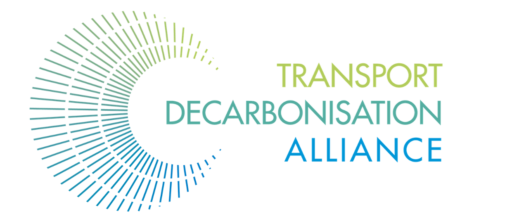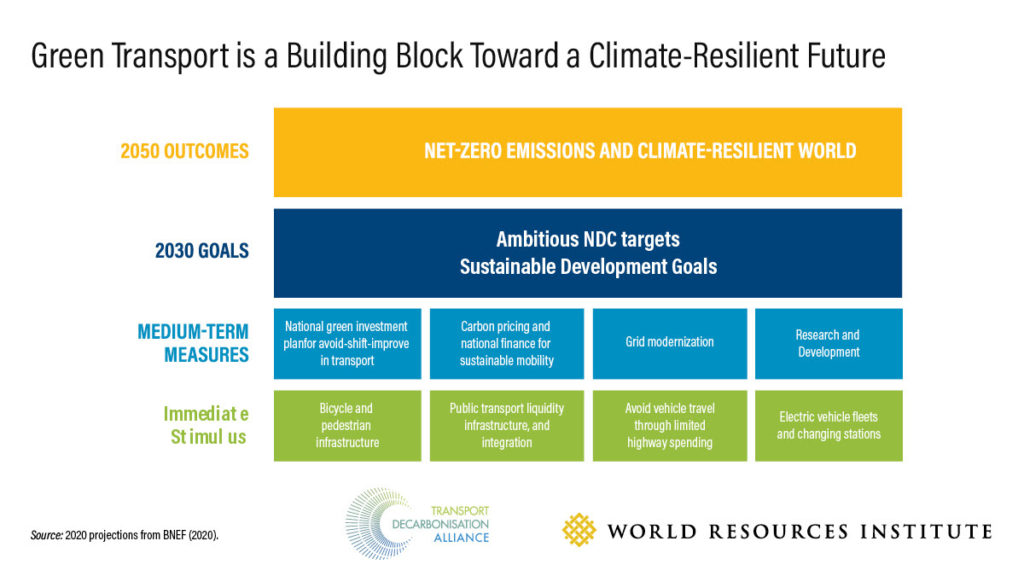
The Green Recovery Paper was launched
This 8 hour course will teach you all the required skills needed when designing and developing a live WordPress website, including using the advanced options of HTML and CSS.
Steering a Green, Healthy, and Inclusive Recovery Through Transport
On 24 June, the paper: Steering a green, healthy, and inclusive recovery through transport/Green Recovery paper by the World Resources Institute and the TDA was launched. This document reviews recovery-related stimulus and policies within the transport sector and offers long-term considerations for decision-makers to shape an economic recovery that links climate, equity, health, and safety. Commissioned by the TDA this working paper contributes to the TDA’s framework of uniting countries, cities/regions, and companies actions to decarbonise passenger and freight transportation.
Executive Summary
Highlights





These areas are public transport, walking and bicycling, vehicle electrification, rail, and research and development (R&D). Actions in these areas can help decarbonise transport while creating jobs, increasing equity, improving road safety, and reducing air pollution
